WEEK8 SICP: BETWEEN MYTHS
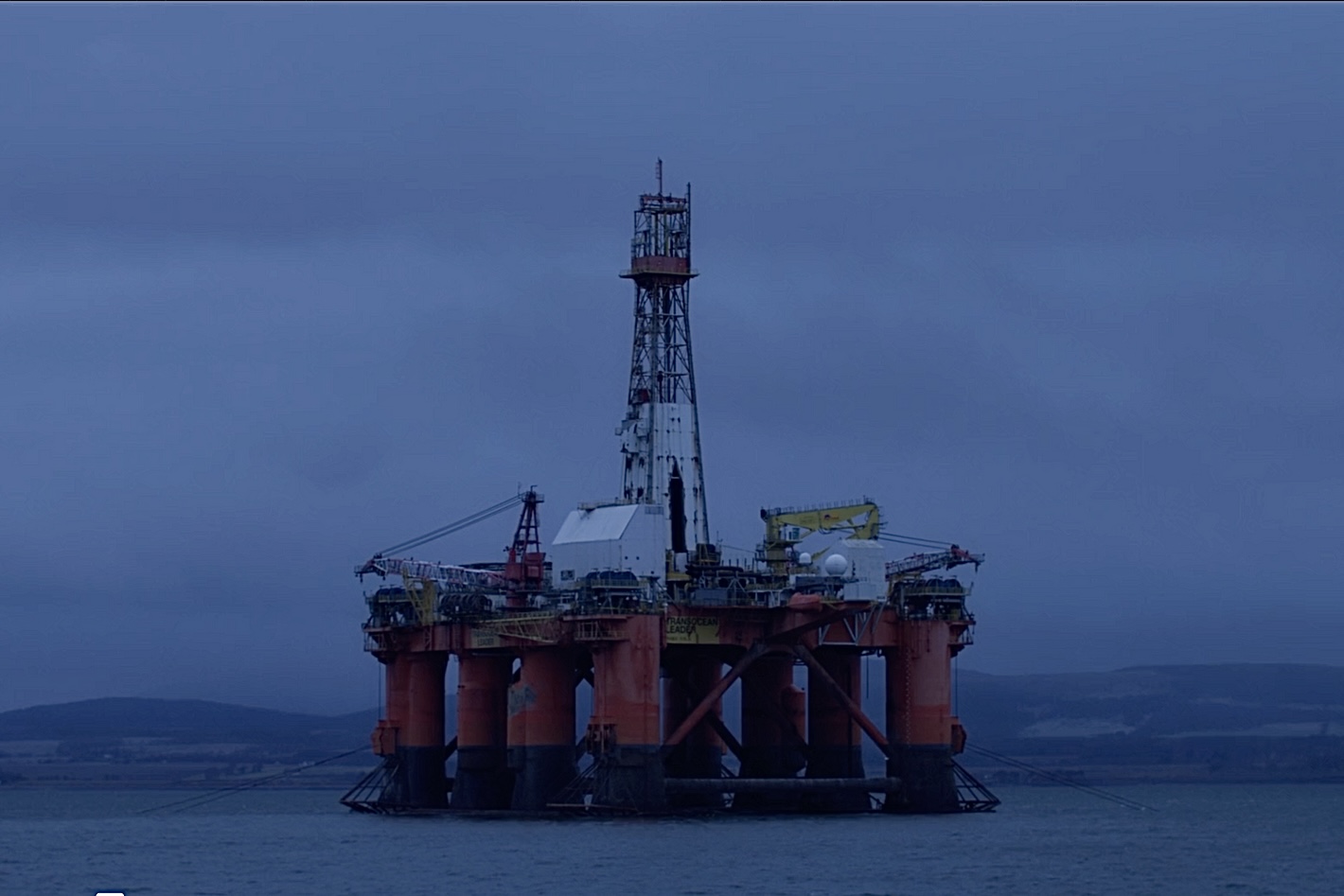
In order to respond more closely to the feedback from my tutors at WEEK7, I have restructured the exhibition programme to focus more on contemporary art practices of the last ten to twenty years. Below are the key changes regarding the selection of works, the exhibition venue and the conceptual framework.
New Venues: Collective(City Dome Gallery, Hillside Gallery)
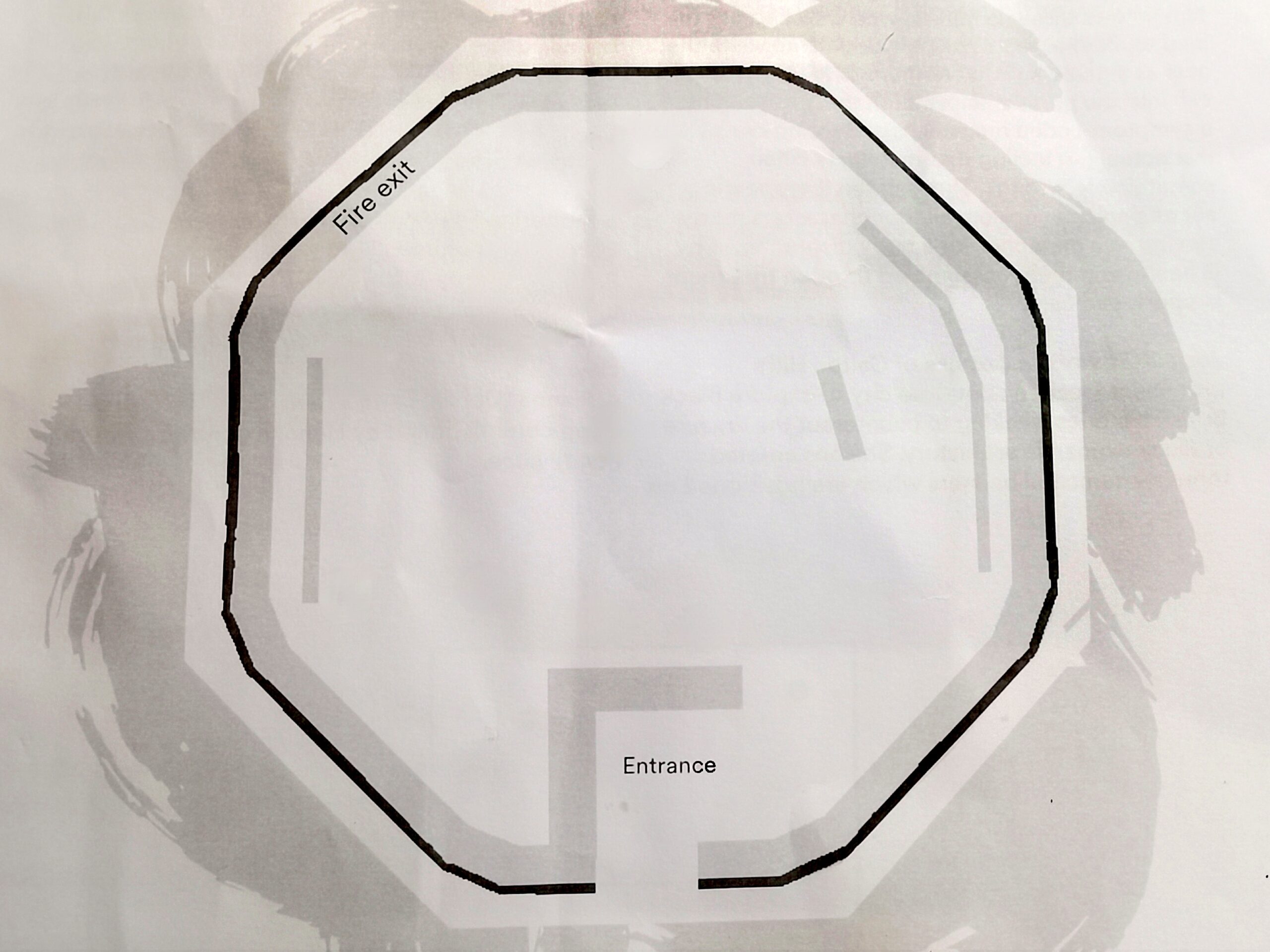
City Dome Gallery floor plan, Carlton Hill, Edinburgh.
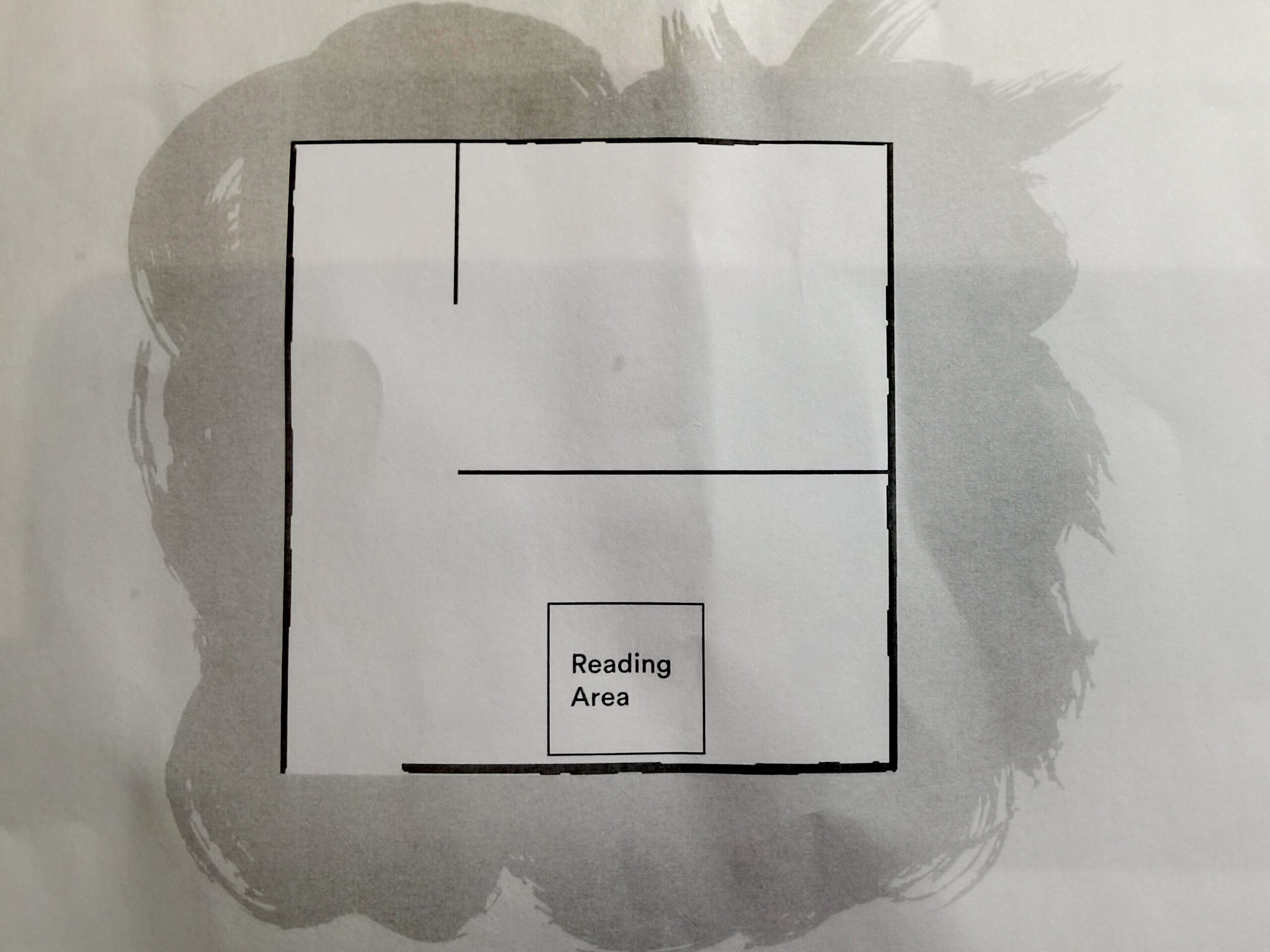
Hillside Gallery and the Library, Carlton Hill, Edinburgh.
In keeping with contemporary exhibition practice, I chose Collective, a contemporary art centre in Calton Hill, Edinburgh, encompassing City Dome Gallery and Hillside Gallery, known for its commitment to curating and presenting innovative exhibitions, events and artist-led projects. As an artist-run organisation, it supports local and international artists, making it an ideal venue.
Retained works of art
-
Rhadinace – Fergus Carmichael
Carmichael’s work explores the entanglement between industry and myth through the lens of social ecology. His video work examines ‘abandoned rig graveyards’ in the north of Scotland, juxtaposing industrial decline with folkloric traditions such as the ritual burning of the Clavie. Drawing on eco-horror and folkloric horror cinema, the work reinforces the tensions between resource extraction, myth and the natural world, and critically explores the ways in which industrial sites accrue cultural significance.
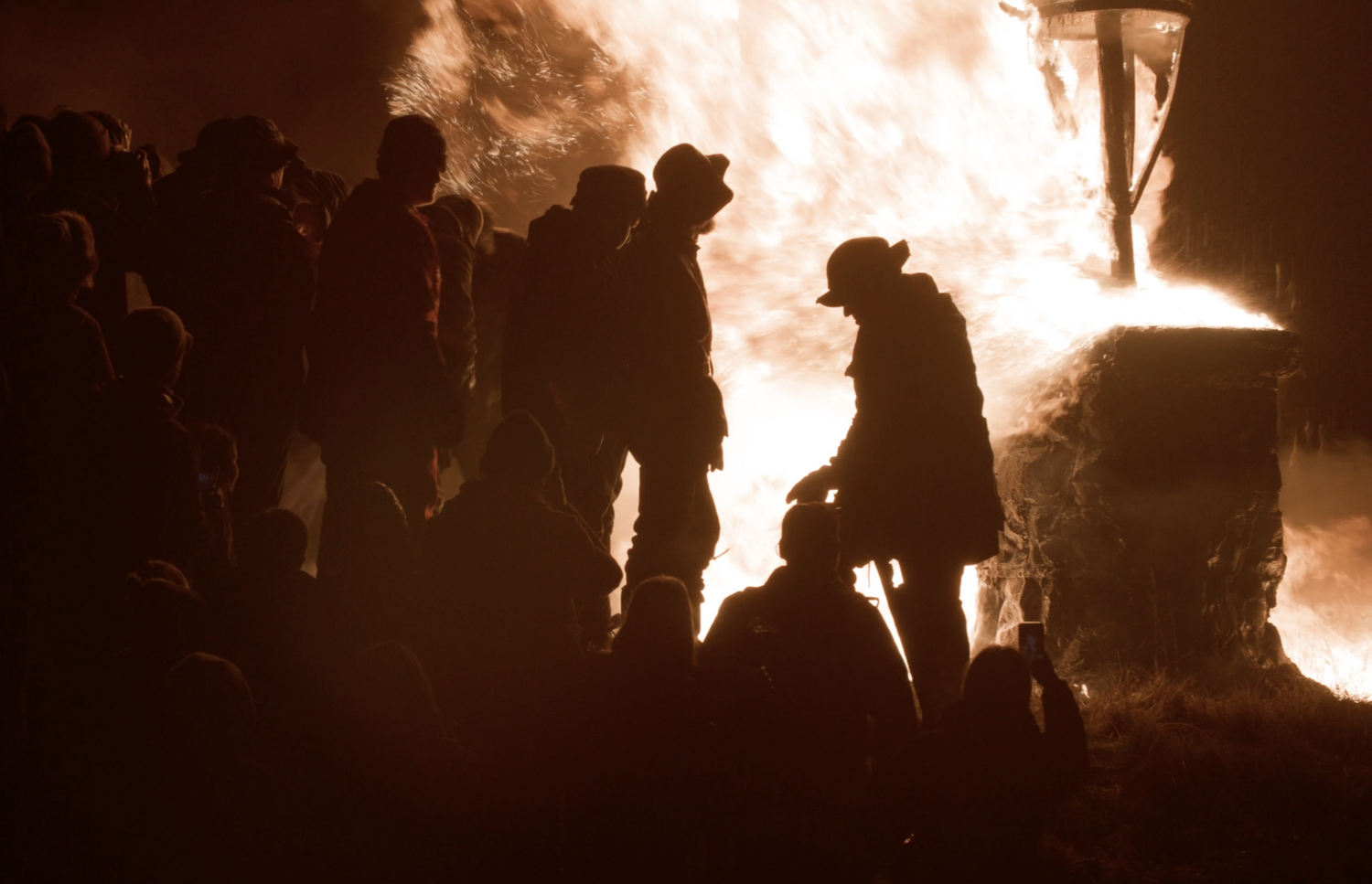
Rhadinace, Fergus Carmichael, 2024.
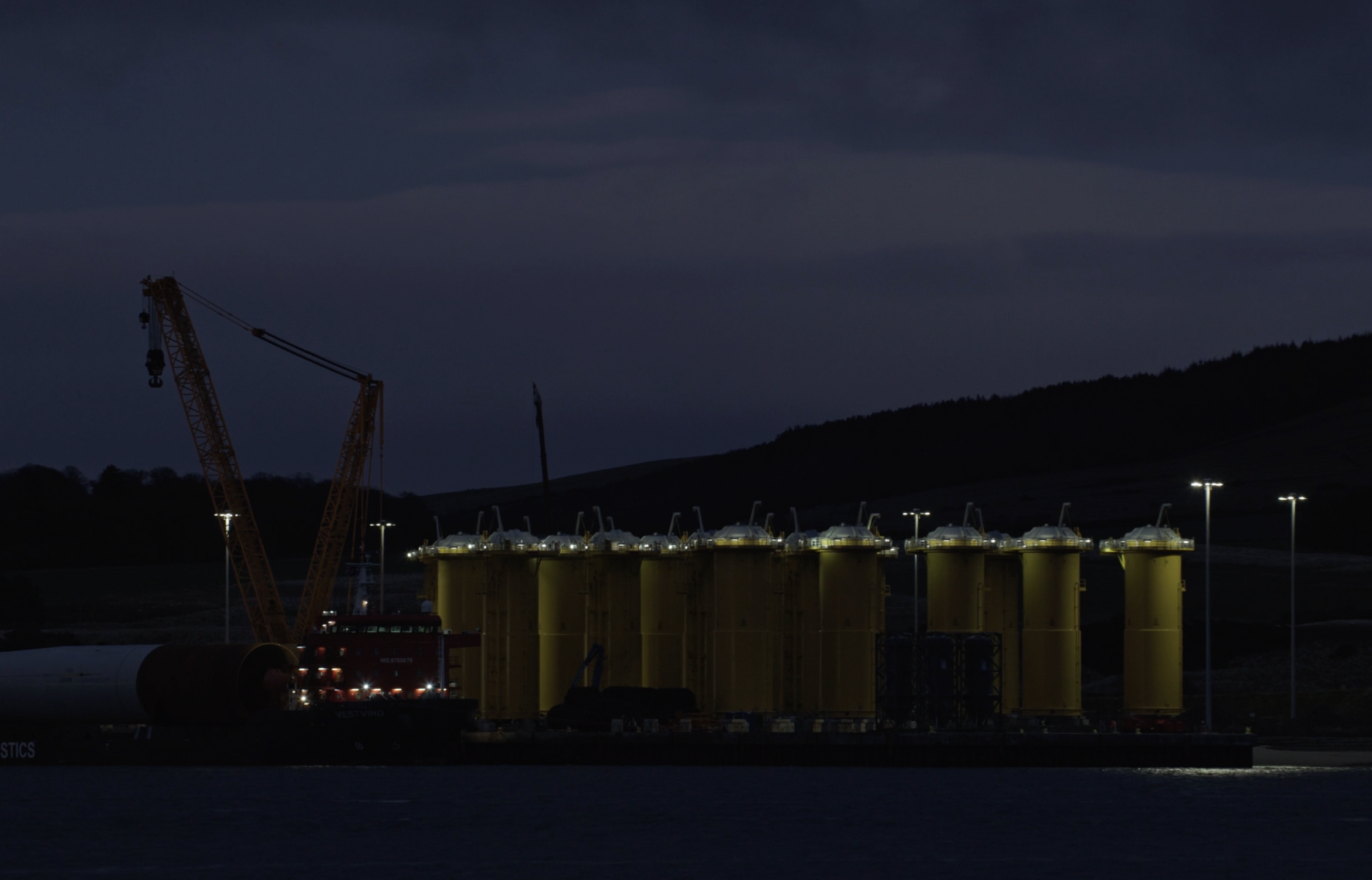
Rhadinace, Fergus Carmichael, 2024.
New selection of artworks
-
The Season of Burning Things – Asmaa Jama & Gouled Abdishakour Ahmed
This moving image work examines the construction of myth, black identity and the transience of spiritual existence. Drawing on East African mythology and Islamic imagery, the work explores themes of displacement, migration and ghostly existence through archival images, experimental sound and personal narratives. Using a surreal visual language and the imagery of the jinn (spirit) as a metaphor for the marginalised as they navigate between the real and the unreal, the artist critically rethinks the role of myth in the contemporary experience of dislocation.
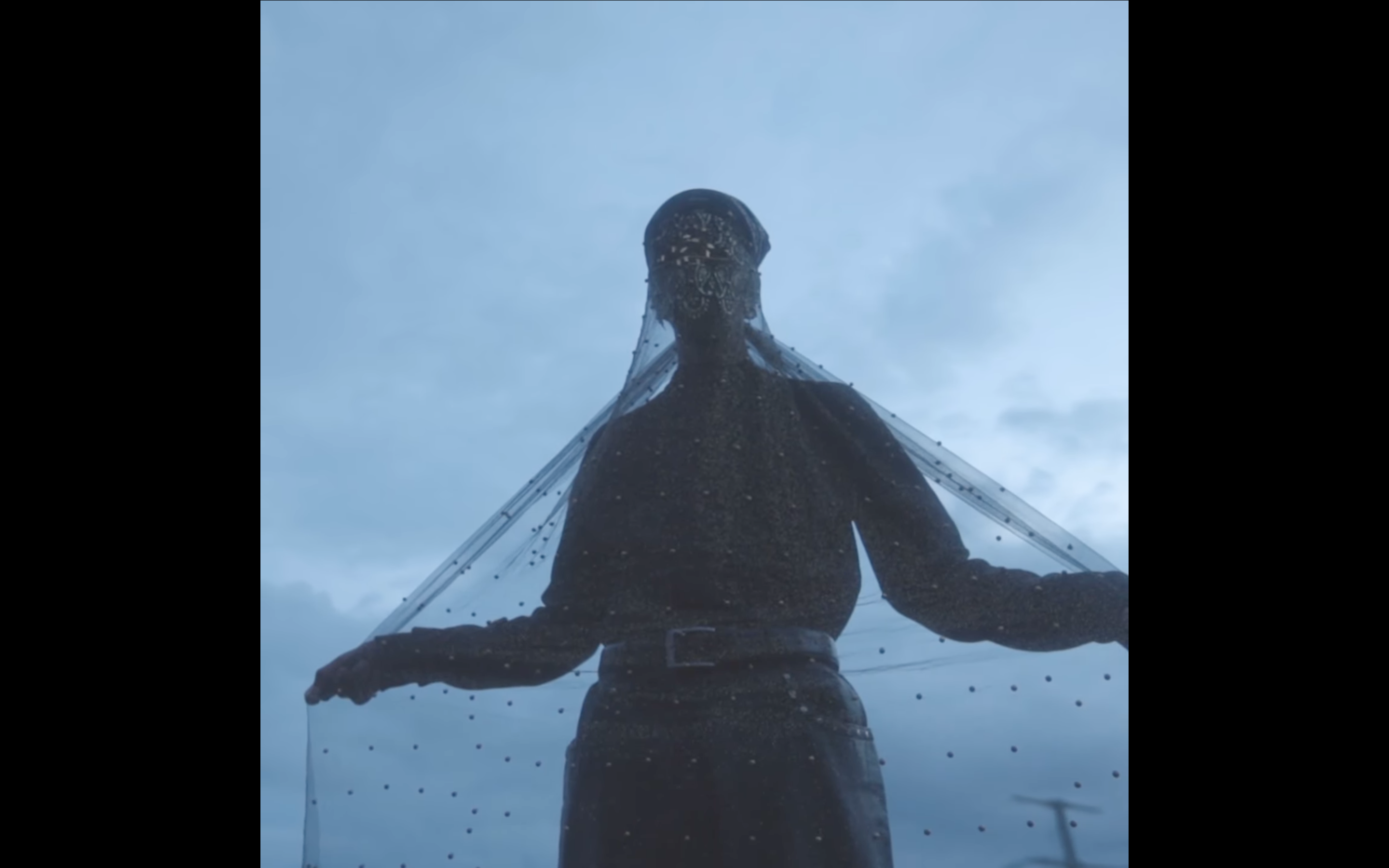
The Season Of Burning Things.
Directed by Asmaa Jama & Gouled Abdishakour Ahmed.
2021.
-
The Tides of Kilpeck – Matthew-Robert Hughes
This short film explores the imagined ancient history of Kilpeck, blending historical and mythological narratives. Through poetic video language and dramatic scene-setting, the work explores enigmatic figures such as the Sheela-na-gig (a female fertility statue) and the Green Man and situates them within contemporary discussions of gender, ritual and landscape. The film’s aesthetic and conceptual approach fits with contemporary ecological and speculative readings of medieval and pre-Christian mythology.
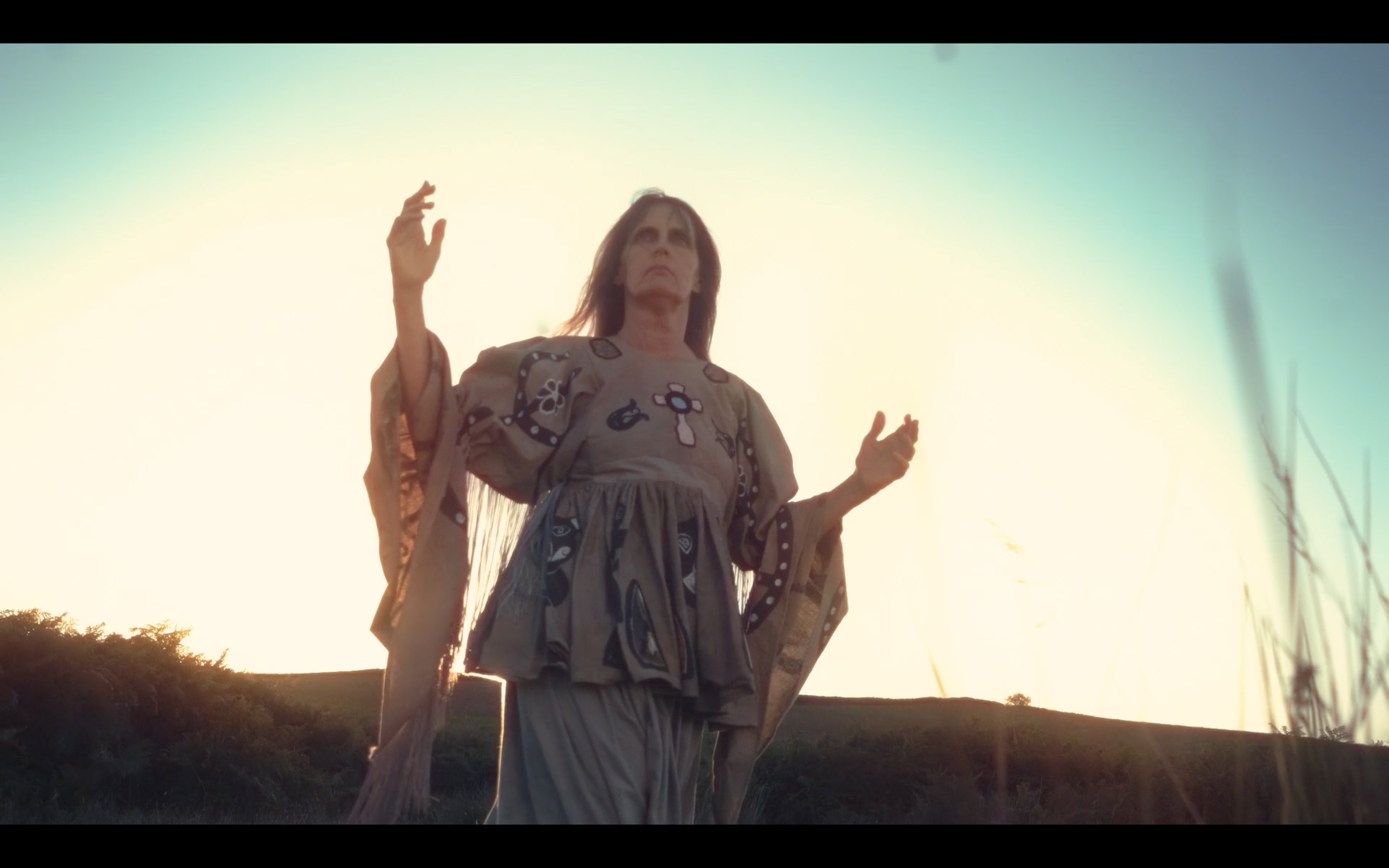
The Tides of Kilpeck, Matthew-Robert Hughes, 2024.
-
Ploughing Old Patterns, Raising New Ground – Legion Projects
This series of audio-visual works examines British folk culture through experimental methods, including radio drama, guided journeys and sonic explorations. Participating artists include Arianne Churchman & Benedict Drew, Paul Kindersley and Fourthland, whose work challenges the notion of ‘folk culture’ as a static and geographically limited concept. Instead, the project presents folk culture as an evolving and contested space that unfolds at the intersection of past and present. This makes it an appropriate project for this exhibition, emphasising the continuing relevance of myth in contemporary society.
Conceptual adjustments (in response to feedback)
Avoiding overly figurative presentations: the new selection of works prioritises conceptual explorations of myths over direct figurative reproductions. By introducing experimental images, sound works and speculative narratives, the exhibition moves away from a traditional illustrative approach to a more critical and poetic interpretation.
Ensuring the relevance of contemporary art: the exhibition emphasises the intersection of myth and contemporary issues such as the climate crisis, post-industrial landscapes and cultural dispersion. Works such as Season of Burning and Rhadinace explicitly address myth as a field to be questioned and re-invented, rather than nostalgically preserved.
Enhanced collaboration with artists: the exhibition includes works that derive from collaborative and interdisciplinary practices (e.g. Legion Projects‘ collective mode of creation, and Hughes’ combination of performance and poetry), thus fostering a more dynamic relationship between artists and curatorial practice. This dovetails with the tutor’s advice to allow the artist’s perspective to shape the form of the exhibition, rather than imposing a fixed thematic structure.
Rethinking spatial dynamics: the choice of Collective as the venue for the exhibition reflected a more strategic approach to curation. Unlike the Helix Visitor Centre, a venue primarily concerned with heritage, Collective focuses on contemporary art experimentation. Its location on Calton Hill, a site steeped in history and mythological significance, provides a rich context for the themes of the exhibition, while avoiding confining it to a purely heritage framework.




Your blog covers a wide range of exhibitions, art projects, theoretical knowledge, and group discussions, offering rich content that touches on various aspects of curatorial practice, such as collective collaboration, digital exhibitions, and interdisciplinary cooperation. What stands out is your ability to draw inspiration from the exhibitions you’ve seen, reflect on them, and apply those insights to your own projects. For instance, after reading Murray Leith and Joanna Aleksandra Radowicz’s article The Importance of Old and New Symbolism in Modern Scottish National Identity, you identified “Scottish mythology” as a curatorial theme you wanted to explore in depth and proposed incorporating interactive elements into your exhibition. In your Week 4 blog, you selected Helix Park Falkirk as the ideal location for the exhibition, drawing inspiration from The Enchanted Forest to create a mythologically inspired discovery trail. This trail would feature digital projections, sculptures, and soundscapes to create an immersive experience. In Weeks 5 and 8, you made adjustments to your project based on feedback from your tutor, integrating themes of Scotland’s canals and industrial culture, and changing the venue to Collective. These changes demonstrate your ability to learn, reflect, and actively respond to suggestions from peers and tutors, making thoughtful adjustments to your project.
You updated your blog about the curatorial project in week 8, changing venues and adding new artists’ work, but I can’t tell anything about the specifics of your project from the progress so far, leaning towards conceptualization?
You’ve done a lot of theoretical research on the theme, I think you can think about what kind of curatorial form you want to do? While incorporating digital art, mentioning experimental sound, video, etc., how can you enhance audience participation through technology or activities (e.g. AR, workshops, digital tours)?
The types of artworks you’ve selected—such as video, experimental art, imagery, and digital media—reflect the diversity of contemporary art and effectively reduce transportation costs. However, a heavy reliance on video and imagery might overwhelm or disengage viewers, as many may only pause briefly at works that catch their interest without fully grasping their significance. To address this, I recommend providing a brief description or analysis for each piece, explaining its connection to the exhibition’s themes and summarizing its content. This contextualization will help viewers quickly understand the work’s relevance.If your exhibition includes narrative structures, consider integrating a clear spatial narrative map or a guided visitor flow into the curatorial plan. It can help the audience better understand the logic of the exhibition.
You’ve chosen Collective (City Dome Gallery, Hillside Gallery) as the venue—a site steeped in historical and mythological resonance. To amplify this synergy, leverage the unique architectural features of the space:
1.Use the dome structure for immersive projections.
2.Design soundscapes ( ambient echoes of folkloric chants) and lighting schemes (dimmed zones for video installations) to create an atmospheric journey.
Here’s a curated example of what I’m looking for about combining mythology and digital art, and I hope it will help you:
MAD has joined forces with Sila Sveta to create an immersive exhibition entitled TUTANKAMON.
http://www.silasveta.com/projects/tutankamon
The Bassins des Lumieres, Bordeaux, France
http://www.bassins-lumieres.com